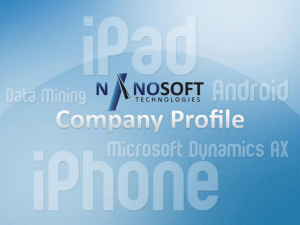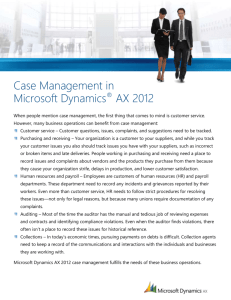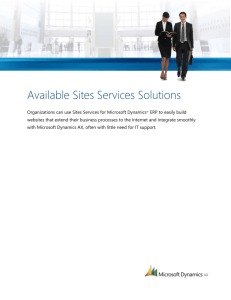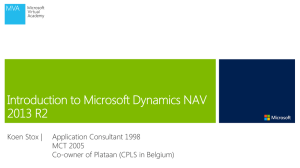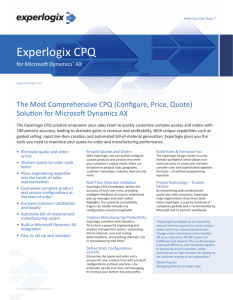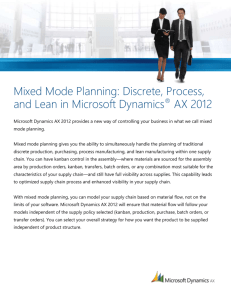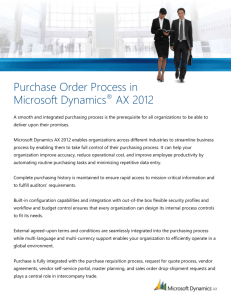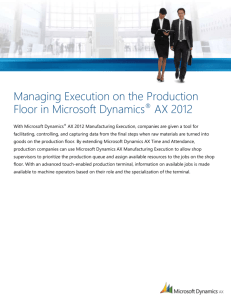Environmental Sustainability in Microsoft Dynamics AX 2012
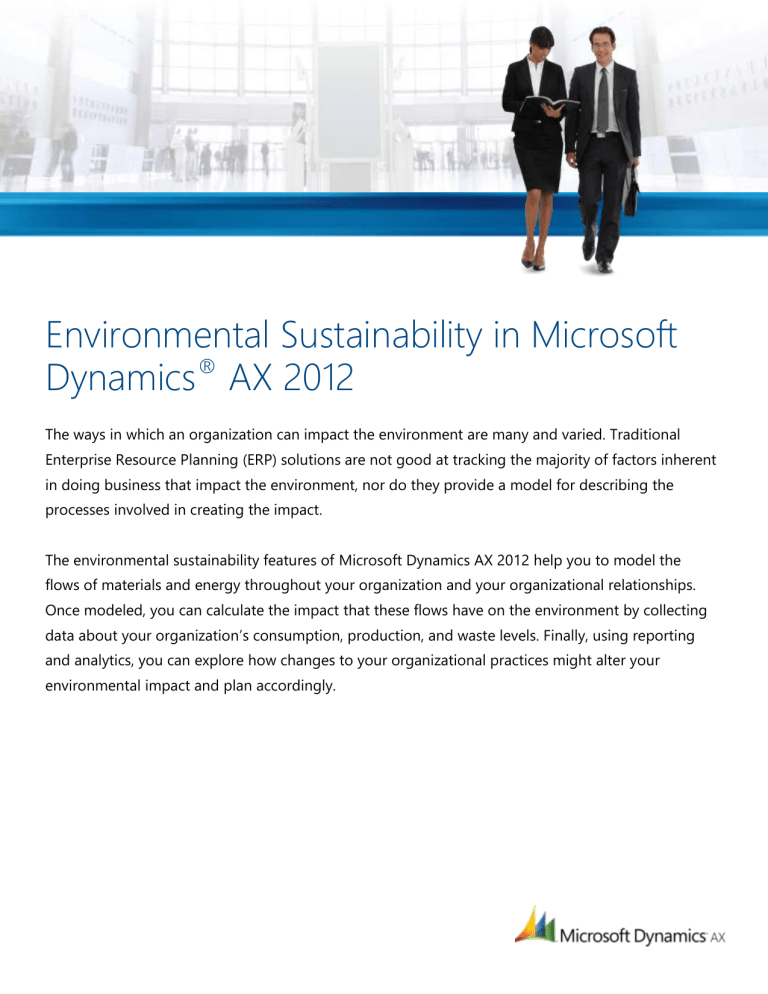
Environmental Sustainability in Microsoft
Dynamics ® AX 2012
The ways in which an organization can impact the environment are many and varied. Traditional
Enterprise Resource Planning (ERP) solutions are not good at tracking the majority of factors inherent in doing business that impact the environment, nor do they provide a model for describing the processes involved in creating the impact.
The environmental sustainability features of Microsoft Dynamics AX 2012 help you to model the flows of materials and energy throughout your organization and your organizational relationships.
Once modeled, you can calculate the impact that these flows have on the environment by collecting data about your organization’s consumption, production, and waste levels. Finally, using reporting and analytics, you can explore how changes to your organizational practices might alter your environmental impact and plan accordingly.
MEASURE YOUR IMPACT
The environmental sustainability features of Microsoft Dynamics AX 2012 are organized into three major areas:
Modeling of business processes and relationships.
Collecting relevant data through existing processes or from automated systems.
Reporting and analysis of organizational performance.
Based on the edict, “You can’t manage what you can’t measure,” Microsoft Dynamics AX
2012 provides a comprehensive mechanism to measure the flows of material and energy through and between organizations. Using these features enables you to gain insight into areas of improvement throughout your organization and your supply chain.
MODEL YOUR PROCESSES
Based on life cycle assessment, Microsoft Dynamics AX 2012 allows you to model complex process relationships and environmental impacts. You can provide the following input:
Describe the environmental attributes of your materials (for example, recycled content) and their relationship with items in inventory.
Specify the processes involved in the life cycle of your products and their relationships with other entities in Microsoft Dynamics AX 2012, such as customers and vendors.
Define conversions or emissions factors for CO
2
, toxicity, and other impact categories.
Visualize your process models
COLLECT YOUR DATA
After you have defined your model, you can collect data through your existing business processes. This helps improve data quality as well as the timeliness of your collection and reporting. This data entry only appears when creating records for the vendors, items, or customers that you know are important.
Collection is integrated in purchase orders and invoices.
A web interface is available for users who lack rich client access or who need a simplified interface.
Web services are used for integration with external systems such as building or energy management systems.
Collect data using EP
MANAGE YOUR PERFORMANCE
After you have defined your model and collected data, you need to report on the results.
Microsoft Dynamics AX 2012 provides a number of tools to facilitate reporting. These tools include:
An environmental manager’s Role Center that displays energy consumption and greenhouse gas emissions data.
An online analytical processing (OLAP) cube with key performance indicators (KPIs) for materials consumption, recycled content of materials, water consumption, energy consumption, greenhouse gas emissions, solid waste, and liquid waste.
The ability to run “what-if” scenarios to explore the potential impacts of reduction efforts or changes to existing processes.
Use the Role Center to keep a close eye on your impact
Microsoft Dynamics is a line of integrated, adaptable business management solutions that enables you and your people to make business decisions with greater confidence.
Microsoft Dynamics works like and with familiar Microsoft software, automating and streamlining financial, customer relationship and supply chain processes in a way that helps you drive business success.
U.S. and Canada Toll Free 1-888-477-7989
Worldwide +1-701-281-6500 www.microsoft.com/dynamics
CCAX2012BV040
© 2011 Microsoft Corporation

